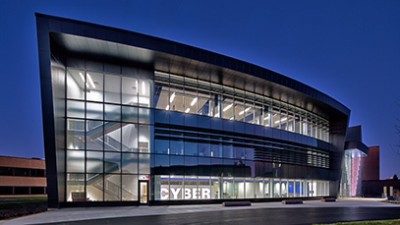Mobile Design and Development Minor
- RIT /
- Golisano College of Computing and Information Sciences /
- Academics /
- Mobile Design and Development Minor
Overview for Mobile Design and Development Minor
The minor in mobile design and development provides non-computing majors with a firm foundation in designing applications for mobile devices. There is an explosion in the types and amount of mobile devices and this minor is designed to provide students with the ability to design and implement cross-platform applications.
Notes about this minor:
- This minor is closed to students majoring in computer science, computing and information technologies, cybersecurity, game design and development, human-centered computing, new media interactive development, software engineering, and web and mobile computing.
- Posting of the minor on the student's academic transcript requires a minimum GPA of 2.0 in the minor.
- Notations may appear in the curriculum chart below outlining pre-requisites, co-requisites, and other curriculum requirements (see footnotes).
- At least nine semester credit hours of the minor must consist of specific courses not required by the student’s degree program.
The plan code for Mobile Design and Development Minor is MDDEV-MN.
Curriculum for 2024-2025 for Mobile Design and Development Minor
Current Students: See Curriculum Requirements
| Course | ||
|---|---|---|
| Required Courses | ||
| Choose one of the following: | ||
| GCIS-123 | Software Development and Problem Solving I |
|
A first course introducing students to the fundamentals of computational problem solving. Students will learn a systematic approach to problem solving, including how to frame a problem in computational terms, how to decompose larger problems into smaller components, how to implement innovative software solutions using a contemporary programming language, how to critically debug their solutions, and how to assess the adequacy of the software solution. Additional topics include an introduction to object-oriented programming and data structures such as arrays and stacks. Students will complete both in-class and out-of-class assignments. Lab 6 (Fall, Spring). | ||
| ISTE-120 | Computational Problem Solving in the Information Domain I |
|
A first course in using the object-oriented approach to solve problems in the information domain. Students will learn to design software solutions using the object-oriented approach, to visually model systems using UML, to implement software solutions using a contemporary programming language, and to test these software solutions. Additional topics include thinking in object-oriented terms, and problem definition. Programming projects will be required. Lec/Lab 6 (Fall, Spring). | ||
| ISTE-140 | Web & Mobile I* |
|
This course provides students with an introduction to internet and web technologies, and to development on Macintosh/UNIX computer platforms. Topics include HTML and CSS, CSS3 features, digital images, web page design and website publishing. Emphasis is placed on fundamentals, concepts and standards. Additional topics include the user experience, mobile design issues, and copyright/intellectual property considerations. Exercises and projects are required. Lec/Lab 3 (Fall, Spring). | ||
| ISTE-240 | Web & Mobile II** |
|
This course builds on the basics of web page development that are presented in Web and Mobile I and extends that knowledge to focus on theories, issues, and technologies related to the design and development of web sites. An overview of web design concepts, including usability, accessibility, information architecture, and graphic design in the context of the web will be covered. Introduction to web site technologies, including HTTP, web client and server programming, and dynamic page generation from a database also will be explored. Development exercises are required. (Prerequisites: (ISTE-120 or CSCI-140 or CSCI-141 or GCIS-127 or NACA-161 or IGME-105 or IGME-101 or NMAD-180 or GCIS-123) and (ISTE-140 or NACA-172 or IGME-230 or IGME-235) or equivalent course.) Lec/Lab 3 (Fall, Spring). | ||
| ISTE-252 | Foundations of Mobile Design |
|
This course is an introduction to designing, prototyping, and creating applications and web applications for mobile devices. These devices include a unique set of hardware and communications capabilities, incorporate novel interfaces, are location aware, and provide persistent connectivity. Topics covered include user interaction patterns, connectivity, interface design, software design patterns, and application architectures. Programming projects are required. (Prerequisites: ISTE-240 or IGME-330 or equivalent course.) Lec/Lab 3 (Fall, Spring). | ||
| ISTE-260 | Designing the User Experience |
|
The user experience is an important design element in the development of interactive systems. This course presents the foundations of user-centered design principles within the context of human-computer interaction (HCI). Students will explore and practice HCI methods that span the development lifecycle from requirements analysis and creating the product/service vision through system prototyping and usability testing. Leading edge interface technologies are examined. Group-based exercises and design projects are required. (Prerequisite: ISTE-140 or IGME-230 or NACA-172 or equivalent course.) Lec/Lab 3 (Fall, Spring). | ||
* Students may take IGME-230, IGME-235, NACA-172, or NACT-270 as an alternative to the ISTE-140 requirement.
** Students may take IGME-390 as an alternative to ISTE-240.
Contact
Program Contact
- Bryan French
- Principal Lecturer
- School of Information
- Golisano College of Computing and Information Sciences
- 585‑475‑6511
- bdfvks@rit.edu
Offered within
the
School of Information
School of Information





